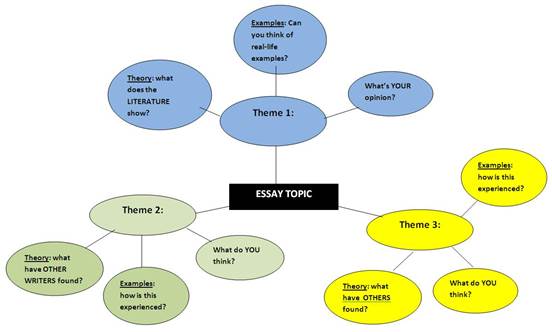Content
• Reading an academic text
• Learn how to Skim Read
• Taking notes and Paraphrasing
• What have you discovered?
• Tips for structuring
• Essay outline
• Basic tips for improving your writing
• Guide your Reader
Reading an academic text
Once you've found and evaluated an information source on your topic, it's time to engage with it!
Remember: Not ALL the text may be relevant to your need. Think about your purpose for reading
• Are you reading for a general understanding of a topic/concept?
• Are you reading for some specific information for an assignment?
Making sense of a text
Good authors will organise their information in a systematic way. Here are some typical ways that information may be organised in a text:
Past ideas to present ideas
Steps or stages of a process or event
Most important point to least important point
Well-known ideas to least-known ideas
Simple ideas to complex ideas
General ideas to specific ideas
The largest parts to the smallest parts of something
Problems and solutions
Causes and results
Now that you know about these practices you can start using them in your own writing too! Keep thinking while you're reading:
Find the main idea
Find supporting details
Make connections
Find cause and effect
Think about the author's purpose
Make predictions
Infer meaning
Distinguish between facts & opinion
Visualize for meaning
Use context clues
KEEP A DICTIONARY HANDY - AND USE IT! It will help expand your vocabulary for writing as well.
Learn how to Skim Read
To save time, skim read the text first to get a sense of the layout and purpose of the content.
HERE'S HOW IT'S DONE
Preview: Read only the title and headings, and look at any illustrations, or charts/tables -- look for concepts that match your need
Overview: Go back and read the Abstract (the initial summary, if there is one), and the first sentence introducing each heading, plus the concluding paragraph. This gives you an idea of the layout and organisation of the text.
Inview: Ask yourself: “Does this text give me the information I require and where might it be located in the text"? This is the section you should read thoroughly and make notes from.
When you use this method, the important points of the text should emerge, giving you a picture of what it is about.
Taking notes and Paraphrasing
Effective note-taking from readings is an essential skill for university study. Good note-taking creates a bank of relevant points that you can use for your assignments. It also helps you realize where your ideas came from and where you should acknowledge an original author.
To take good notes requires:
• Recognizing the main ideas in a text
• Identifying what information is relevant to your task
• Summarising or using diagrams to reduce the information
• Recording the source of the information
GUIDE TO NOTE-TAKING
Ensure you have full bibliographic details (author, date, name of article/book website, publisher, where published etc) of the reading on your notes as you will need this later when constructing a reference or bibliography list.
§ Try to write a one sentence thesis statement. What is the whole reading/chapter about? This can often be found in the introduction to the chapter/article and identifying it will focus your notes.
§ Keep your notes to the main point. Do not just copy all of the text in the original.
§ Try to write the points in your own words so that you understand the reading. Do not copy large slabs of the original, rather paraphrase or summarise the issues (SEE "How to paraphrase" below)
§ Note any page numbers for direct quotes. Keep direct quotes to a minimum and ensure they are copied exactly. In your writing, quotes are used to support your argument, not to form the argument itself.
§ Leave space for critical comment e.g. things that are unclear; contradictions; points of agreement/disagreement with other readings on the same issue; controversial statements/viewpoints presented; whether you agree with what is being stated.
§ Store your notes in an orderly, easily accessible way.
NOTE: When you use your own words to represent the main ideas in a text, this is called paraphrasing. This is a good skill to learn as it helps you to understand the concepts in a way that is clear to you. It can take time but it will really help your understanding.
HOW TO PARAPHRASE:
Read a section of the text carefully, until you understand exactly what the author is saying.
Then look away and capture the main statements in your own words.
Afterwards, check your paraphrase against the source for accuracy.
Adjust phrases that match the original too closely.
BUT: Even when you are paraphrasing you are still borrowing someone else’s ideas, so it’s important that you write down the details of the source where you found the idea. You can make use of your paraphrase in your essay, but should acknowledge the source (See Module 7, Citing sources)
When making notes, you may also insert your own responses or even notes to yourself in square brackets.
For example, [I disagree, because in SA it doesn't work this way] or, [put this information in a table - supply source info].
What have you discovered?
1. What are the readings telling you?
2. How does this fit with what you already know?
3. Can you answer the assignment?
4. Is there anything missing?
5. Have you discussed the topic with someone in your class?
Talking about it helps to clarify your thinking.
Work through your notes and code the separate themes with A, B, C etc. This will make it easier to prepare your arguments and to locate relevant material while you're writing.
Tips for structuring
From your notes, select the information that will make the best argument or discussion. It isn't reasonable to write about everything you discover about the topic, so choose a few things to discuss in detail that will demonstrate your understanding.
Make a list of all of the points you wish to make, and then group these points into common themes or categories.
Decide which is the best sequence for the themes.
Prepare a plan (see the example below)

Essay outline
|
The simplified diagram below shows what an essay should look like structurally. It is important that the introduction, body and conclusion are linked together as a whole. The introduction will contextualise the topic before stating the problem (specific topic). You may state your position (thesis statement) and then briefly outline what will appear in your essay. |
 |
A typical body paragraph has the following structure:
• a topic sentence which conveys the main idea of the paragraph and is commonly found at the beginning of a paragraph.
• supporting sentences which, using your research and citing your sources, provide discussion and examples which add to and expand upon the topic sentence.
• a concluding sentence can help to tie the paragraph together, or may raise a question that links to the next paragraph.
At all times, guide your reader through your writing by signalling when you are introducing a new topic and relating it to the whole assignment.
Basic tips for improving your writing
Constructing sentences
Ask yourself: “What is the thing I want to say?”, then try to express that as simply as possible.
Try saying it out loud first before writing it down. Be prepared to change it later on if you think of a better way of putting it.
Keep it simple. Express one point per sentence. This helps you avoid getting into a tangle of bad grammar or logical thought. Long sentences are difficult to read and understand.
Read and re-read each paragraph aloud to check that all your sentences are complete and sound right. See if you can improve the writing by trying out different ways of constructing the sentences. Ask a friend to read it and comment on what is confusing. Then try to make it clearer. Get rid of unnecessary words.
Keeping to the topic
Keep your essay plan in sight. You should be checking that each one of your paragraphs is relevant to the essay topic, and builds towards your overall argument or position.
Each paragraph should have a topic sentence which indicates the main point of each paragraph. Does each statement in that paragraph relate to the topic sentence? Check that you’re not wandering off into something irrelevant.
Style
Make sure the tone is not too informal: e.g. write “there is” rather than “there’s” / “do not”, instead of “don’t”.
Try to state your own views in an impersonal way. E.g.: “It seems logical to assume that …..” or “A more useful way of looking at the problem is ….” rather than “I think”
Be careful of bias or prejudice in your thinking. Your viewpoints must be honest but fair, backed up with evidence.
Guide your Reader

Signal words tell the reader where the argument is going. Try inserting these words to help guide your reader. (Table borrowed from “Essay Success”, Deakin University)
|
MEANING |
SIGNAL WORDS |
|
Addition |
in addition, again, also, and, besides, further, furthermore, moreover, too, similarly |
|
Cause and effect |
accordingly, as a result,
consequently, otherwise, therefore, |
|
Comparison |
similarly, likewise, in the same manner, also, as well as |
|
Concession |
otherwise, admittedly, however, nevertheless, of course, after all, nonetheless, indeed |
|
Conclusion |
in conclusion, to sum up, finally, lastly, to conclude, accordingly, overall |
|
Connections in time |
after a short time, afterwards, as long as, as soon as, at last, at length, at that time, at the same time, before, currently, earlier, of late, immediately, in the meantime, lately, later, meanwhile, presently, shortly, since, soon, temporarily, thereafter, until, when, while |
|
Contrast |
in contrast, although, and yet, but, however, nevertheless, on the other hand, on the contrary, conversely, whereas, alternatively, in spite of |
|
Emphasis |
undoubtedly, indeed, true, above all, most important, the main point here is |
|
Examples |
for example, for instance, in other words, in illustration, in this case, in particular, specifically, an example of this |
|
Qualification |
except for, admittedly, studies suggest that, perhaps, it would seem that, it tends to be the case that, may be, could be |
|
Sequencing |
firstly, secondly, lastly, finally, then, too |

